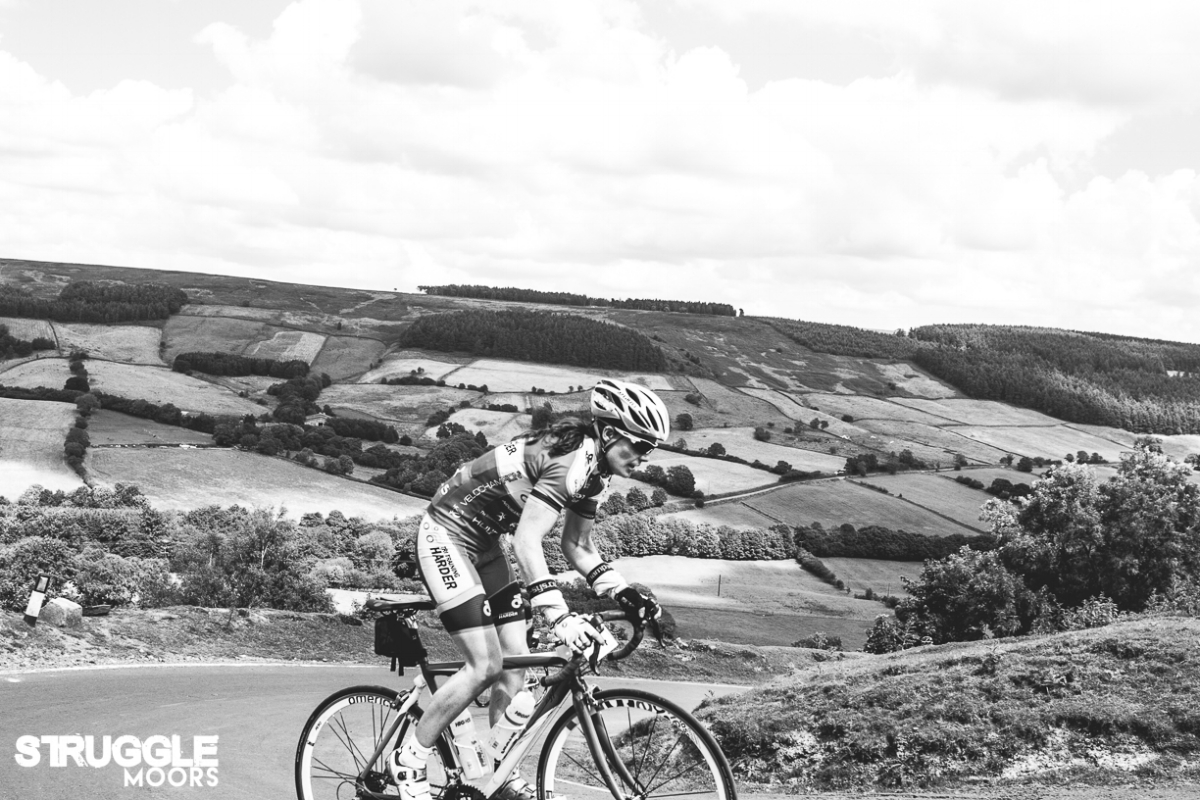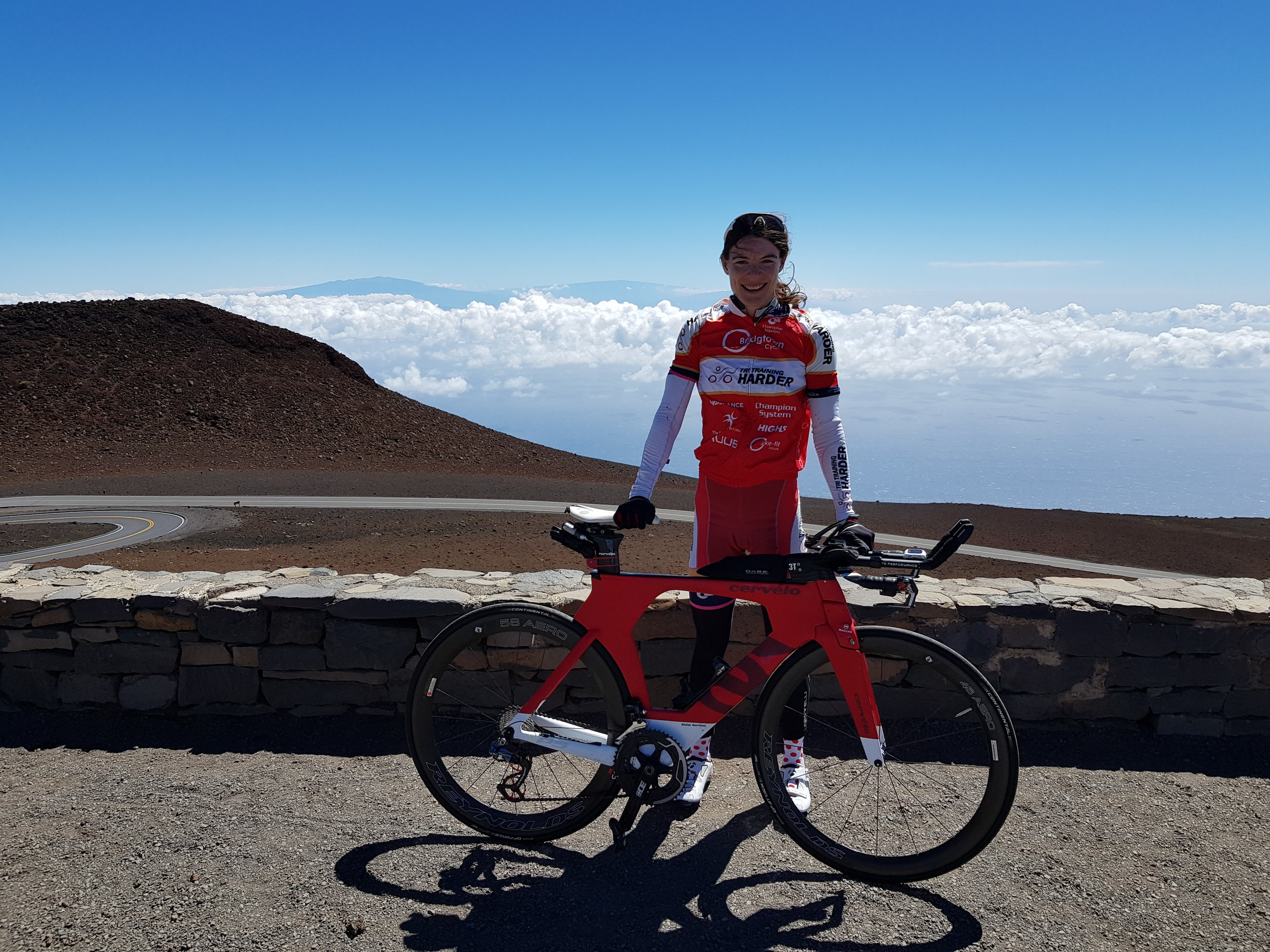Elaine Garvican a 2017 Season Review
2017 was the second year that Elaine was working with Tri Training Harder and here she looks back at the year which was occupied significantly by the world championships in October. Here she candidly discusses the highs and lows of both the training and experiences of her season as she looks forward to what the 2018 season will bring!
The Highlights:
Swam: 516.2km
Biked: 492.5hrs
Ran: 1647km
6 triathlon races (1 x Olympic, 4 x 70.3, 1 x Ironman)
5 triathlon podiums (3 overall win, 2 AG wins)
5 running races (1 x 5k, 3 x 10k, 1 x half marathon)
5 running podiums (3 overall podium, 2 AG podium)
Tricep dips: 20,300
Swims with dolphins: 1
Number of 10,000ft volcanoes cycled up: 1 (Haleakala, Maui, 6 days post-Kona)
Weeks with no training: 4 (3 recovery post-Kona, 1 due to illness at the start of the year)
Average weekly training hours: 17.1hrs
Biggest weekly hours: 29hrs
Average weekly TSS: 1,064
Biggest weekly TSS: 1730
It’s the end of the year again and the cold, dark nights are a good time to crunch the numbers on what I did this past year, reflect on the many successes, learn from the mistakes we made and plan my next season. I’m not really one for making New Year Resolutions, but I do set several goals across all disciplines, and they help me to stay accountable. 2017 was only my second year working with a coach, but comparisons show some big steps forward in a lot of areas, which is encouraging for the future! There’s still a lot I would like to achieve in the sport of triathlon and I am beginning to formulate plans for the coming season, but before looking too far ahead, it’s time to look back one last time.
At about this time last year, I wrote a review of 2016 I’ll follow a similar pattern – you can read about 2016 here.
Here is my Training Peaks PMC for 2017:
Overall Training Time
I thought I’d spent quite a lot of time training in 2016, but somehow we managed to squeeze almost 100 hours more into 2017. I think this was primarily a result of getting started quite early – I worked really hard throughout the winter and because I wasn’t running this meant a lot of time on the bike. Because I live in Yorkshire, this meant a lot of time on the turbo and I think a big chunk of those extra hours were logged between February and April when we focused on increasing strength in the gym and maximising aerobic performance on the bike. I also had to get used to 4km swim sets being the norm!
However, interestingly, the hours don't tell the full picture. This year, I started for Kona in October – twelve months out. Which in fact means there were a few 2017 season hours in the 2016 column...but who is counting! There were a lot more TSS points in 2017 with an average of 61 TSS points per hour in 2017 and "only" 55 in 2016. Which, when we consider I was pushing harder for longer in the year, I can certainly say I earned my time off! Interestingly after such a big season, I took an extended time off. You can see after point E in the PMC, I let my fitness drop a lot. In fact, this was still a 20% higher base CTL value than after the end of 2016's season. However, proportionately it was a bit more. This was because firstly, I felt I needed it and secondly, I am not concerned about "losing the fitness". I know I can get that back, but the rest was more important now.
We can see below that my volume has increased across each discipline as well. Last year, we had to reduce my running to give me time to adapt. The same in parts was true this year. However, I was able to do more in 2017 yet this is still 15% less than in 2015 and 37% less running than in 2014, yet still I am running faster than ever!
Swimming
Yet again, there has been a step change in my swimming. I have swum further and more regularly than in any previous year and although I had some dodgy race swims (mostly due to cold water) on the whole I was rewarded for this diligence by a greatly reduced gap to the other girls. Some one-on-one swim coaching, plus video analysis from Philip identified that arguably the most important phase in my swimming – the power phase where the water is “pushed” back behind you – was actually the worst part of my stroke. (For more on this, see Coach Alan’s blog here: https://tritrainingharder.com/blog/2017/06/swim-faster-stop-catching-and-start.html ) Relatively speaking, my triceps were pretty weak, and fatigued quickly, meaning a lot of wasted potential speed from every stroke. So at the beginning of March, Philip challenged me to complete 100 tricep dips a day – or pretty much every day anyway. At first, I could only do these in blocks of 10, but 3 ½ months later, I was able to do 100 consecutive tricep dips… and by early July, the standard became 200 a day. By the time we arrived in Kona, I had amassed a total of 18,000 tricep dips and I could feel the difference it made to my swim stroke. In Hawai’i, I was happy, relaxed, confident in my training and warm (!) in the water and the result was my fastest ever Ironman swim split – in a non-wetsuit swim! My time of 1:06 exceeded my best-case scenario and was an excellent start to the day. Of all my times across all 3 disciplines throughout every race in 2017, my Kona swim ranks in the top 3 of those I am most proud of.
Cycling
As seems to be the common theme, in 2017 I spent more time on my bike than in any other year. But simply spending 50 or so hours longer riding my bike doesn’t, in itself, mean much. It’s not until comparing average and maximal power outputs that my feeling of being stronger and fitter on the bike is supported with evidence.
Here we can see how in all durations longer than 6 minutes in length, the yellow line (2017 power outputs) are higher than in 2016. Interestingly my 20 minute times are more or less the same. Yet when you look at longer durations, we see they are clearly higher in 2017. This is key when looking at racing longer how is a 20 minute test representative of a 5 hour bike? Here they would predcit the same result, yet we can see it is much different.
There are less objective ways to illustrate this too – in all of the big sportives I completed, I was faster and much stronger on the hills than the previous year. One of my favourite rides of the year was the Struggle the Moors sportif - 176km with 3370m of climbing including several gradients of over 30% which took me over 7 hours to complete. Thankfully, it was a lovely sunny day and although it was hard, it didn’t wipe me out for the following week’s training.
Elaine in the Struggle the Moors Sportif
My other favourite would have to be riding up Haleakala, the extinct volcano that forms the south/east side of the Hawaiian island of Maui, which I did the Friday after the Ironman World Championships. The summit is 10,023ft with the road starting at sea level and winding up through the cloud layer and thinning air to reach the peak. The views were amazing and the beautifully smooth road never gets above 10% although the strong winds give you plenty to work against instead, especially on a TT bike! At just under 4 hours, it might be one of my slowest ever 50km rides but it was one of the best and most memorable.
Running
If there is one area where there still exists a lot of potential for improvement, it is my running. The last two years have seen major changes in my running form, (see here and here) and whilst these have meant that I am able to run significantly quicker, it has been at the expense of any run training over the winter and early spring. However, I ran over 400km further, in sessions which gave me a 55% increase in total TSS and I know I am capable of a lot more. Although ultimately I remain a little disappointed in my Kona run, on the whole I am proud and pleased with the way I ran off the bike and the times I produced throughout the year. Having twice deferred my London marathon Championship start I hope that 2018 will finally see me on that start line.
Summary
2017 was an extremely successful year for me in sport. I got to experience another champagne podium, won several races and had a lot of fun across a range of distances. I made training and racing a priority, choosing to focus on completing my sessions, and recovering from them well, at the expense of some socializing. I don’t consider this to have been a “sacrifice” – it was a choice I made when we decided to aim for the Kona AG podium [read here to see just how close that was] – and even with the hindsight of not achieving this goal, it’s not a decision I regret. But it’s not a choice I am prepared to make year in, year out and so I have also chosen to let sport become slightly less important to me in 2018. I am far from bored with Ironman and by no means am I burned out – I love racing and I love being at the front of a race with the best amateurs in the world – but I will prioritise my time and energy slightly differently this coming year in order to preserve that passion and desire in the long term. So, although I’m not completely sure what my race schedule will look like, and although it will certainly include a lot of endurance events, don’t expect to see me on the start line of a full-distance Ironman this year.









